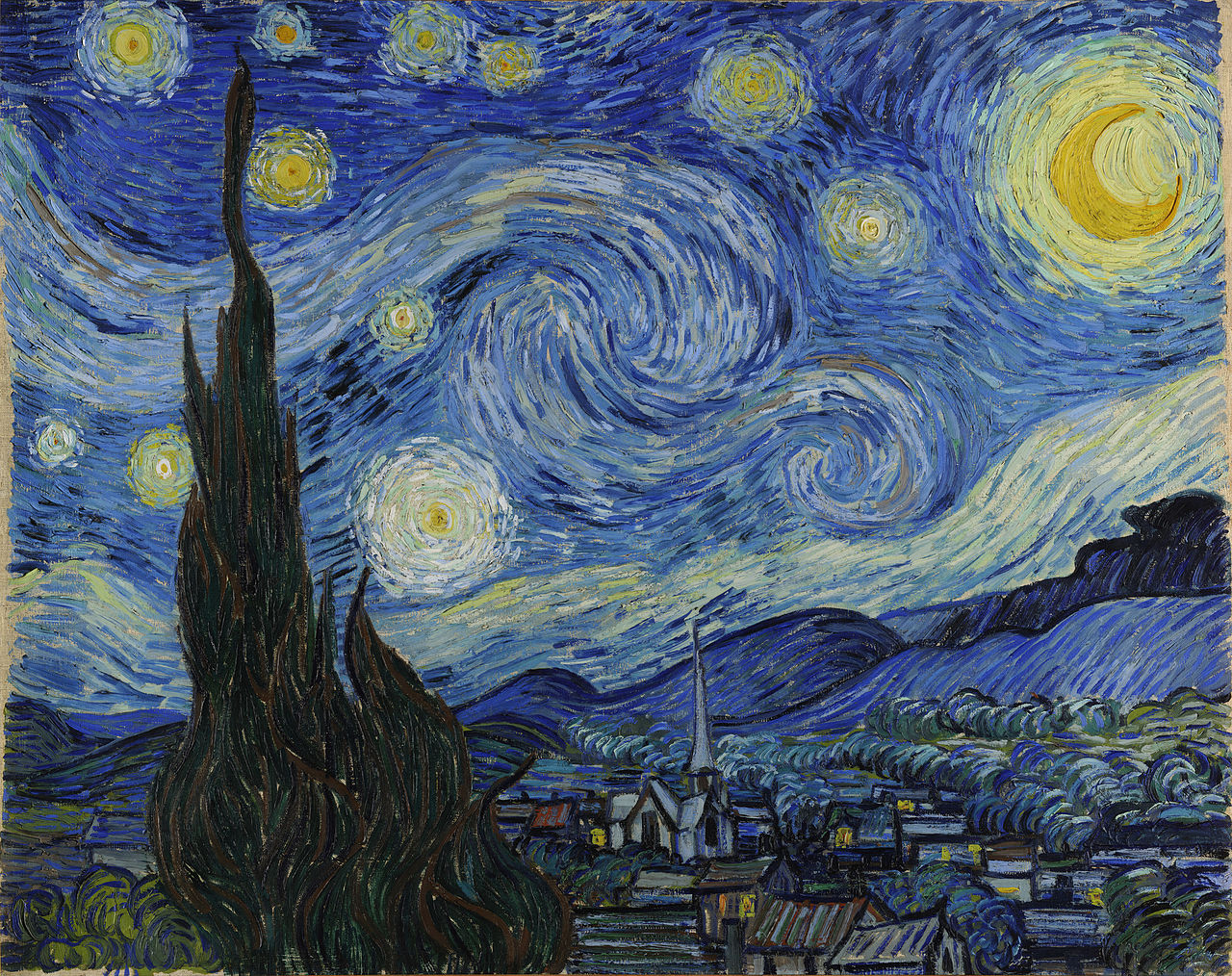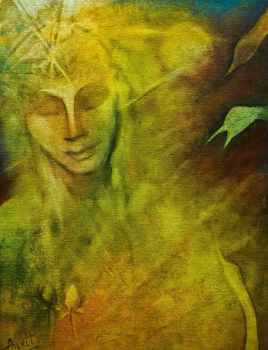
Vincent Willem Van Gogh is undoubtedly one of the most celebrated and influential figures in the history of art world. The well-read Dutch Post-Impressionist artist, who spoke four languages, lived in penury throughout his life. Though, he never experienced success during his lifetime, but his paintings are among the most cherished and valuable objects in the world today. And, one such celebrated van Gogh painting is The Starry Night.
Van Gogh completed the ‘Starry Night’ in June 1889, roughly a year prior to his death. It was in 1941 that the Museum of Modern Art in New York City acquired the painting. This oil on canvas painting depicts a nocturnal scene, a small village in a mountainous landscape, underneath a crescent moon and star filled night. In the foreground, one can see a cypress tree and in the centre of the village there is a church spire. A disintegration of the composition helps observers understand how their attention is steered over the canvas.
In the foot of the mountains and in the houses, a horizontal line is suggested. In the tree, strong vertical is visible. These two lines direct observers to the sky and mountains; though, we cannot ignore the diagonal lines originating from the mountains and the tree. Notably, the sky takes up about two thirds of the canvas. It seems as if the diagonal lines frame and emphasize the sky. The solid composition sets the stage for a dynamic interplay of lines. The most striking is the line starting at the left of the canvas, swirling towards the centre, where it intertwines with other spiraling lines around. Around the moon, a curving line arises from the colorful brush strokes, as we can say for other sinuous lines. We can say finger created a structured composition, which created a room for an exciting seemingly chaotic play of lines. The composition appears to be a well-thought ratio of balance and tension.
As far as the ordinance, the disposition of planes and figures depicted in the painting are concerned, in the foreground, we can distinguish the top of the tree, which covers the entire length of the canvas by an inch. On the left of the tree, we can see a little vegetation and on the right houses and some trees. All these elements in the foreground are cut off below; they are not fully fitted within the frame. The next plane displays a village. Behind the village, we can see a forest and mountains. The highest mountain top is naturally the darkest and farthest away. The crescent moon is bright and clearly visible; therefore, it seems rather close to the earth. The moon is accompanied by stars in different sizes and at variable distances. Between the stars, an unknown stream flows through the sky. Behind the stream, some more stars are visible. As if lit by the moon and stars a band of whites separates the mountains from the sky.
Van Gogh applied paints with thick broad strokes. If we look very closely, we can see the texture of the paints and also, that he did not apply a base. The features of paintings like thick outlines, simplified forms, and heavy contours that are roughly filled with short brushstrokes are clearly visible in the painting.
In the Starry Night, the illusion of space is created by intimating the elements in the foreground and the overlapping of picture planes. In addition, we can see a finishing point. Someone left of the church, the woods move towards that point and they are getting smaller as they are closer. Though, there is some overlapping in the sky, the sense of spaciousness is mostly created by the juxtaposing of smaller and bigger elements and the suggested movements. This painting is nothing less than marvelous.
The splendor of this painting can be experienced by visiting the Museum of Modern Art. While many oil painting galleries display copy of van Gogh’s works, most of his original work is put on display at the Van Gogh Museum in Amsterdam. As the name suggest, this museum maintains the largest collection of the artworks of van Gogh. And, it is also one of the most popular and most visited museums in the world.





















